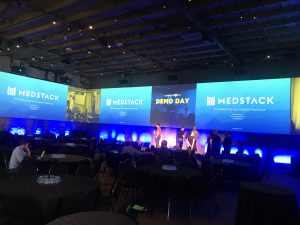In the fast-paced world of modern healthcare, the role of digital applications has grown significantly. These applications have become invaluable tools in improving patient care, enhancing efficiency, and empowering both medical professionals and patients.
Developing a successful healthcare application requires careful planning and attention to various details to ensure it meets the needs of its users effectively. In this article, we will explore some of the key steps and considerations to quickly develop a robust healthcare application.
Defining the Purpose and Target Audience
The first step in healthcare application development is to have a clear understanding of the app’s purpose and target audience.
Whether it is focused on telemedicine consultations, chronic condition management, medication reminders, or other healthcare-related functions, a well-defined purpose will guide the development process and ensure the app caters to its intended users.
UI/UX Design
It is crucial to consider intuitive UI/UX design. A seamless and user-friendly interface is key to enhancing patient engagement and ensuring the app’s usefulness.
Focus on easy navigation, coherent visuals, and informative graphics to create a smooth and visually appealing experience for both healthcare professionals and patients.
By prioritizing user experience, your app can foster better communication and facilitate improved outcomes in patient care.
Integration with Existing Systems
To be truly effective, a healthcare application must seamlessly integrate with existing healthcare systems and databases. This includes integration with electronic health records (EHR) systems and third-party APIs for medication information.
By harnessing the power of open-source EHR development platforms like zapEHR, developers can gain access to a wealth of customizable features, enabling them to tailor healthcare applications precisely to their unique requirements.
Compliance and Data Security
Healthcare applications deal with sensitive patient data, making compliance with regulatory standards and data security protocols a top priority. Staying well-informed about relevant healthcare regulations, such as HIPAA in the United States or GDPR in the UK and European Union, is paramount.
By integrating with compliance and security platforms like MedStack, developers can enhance data protection efforts, ensuring patient privacy and earning user trust. MedStack streamlines the process for digital health application innovators to develop, launch, and grow cloud applications that adhere seamlessly to the stringent data privacy and security standards of today’s healthcare enterprise systems.
Testing and Quality Assurance
Rigorous testing is crucial to identify and address any bugs or issues before deploying the application to users. This involves various types of testing, including unit testing, integration testing, and user acceptance testing.
Emulating real-world scenarios and load testing helps ensure the application’s stability and reliability under different conditions.
Continuous Improvement and Feedback
The journey does not end once the application is deployed. Regularly gathering user feedback and monitoring the app’s performance is vital to identify areas for improvement and further enhancements.
Continuous updates and iterations keep the application relevant, aligned with user needs, and up-to-date with technological advancements.
Developing a healthcare application is a complex process that requires a thoughtful approach and attention to detail. By understanding the app’s purpose, prioritizing user experience, complying with regulatory standards, and leveraging the right technology stack, developers can create robust and efficient healthcare applications that positively impact patient care and the overall healthcare industry.
This article was contributed by zapEHR and was originally published here. zapEHR’s team includes technical and subject matter experts who will help you to develop a custom application solution for your specific practice goals. Learn more about how zapEHR can help you to quickly develop a cutting-edge, customizable healthcare app.





